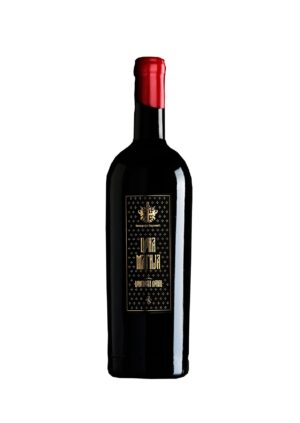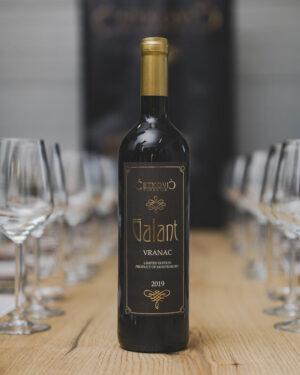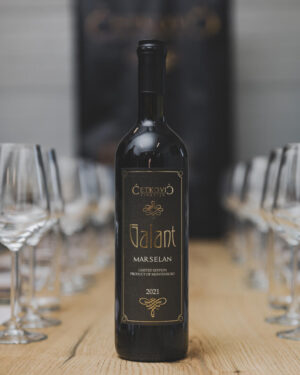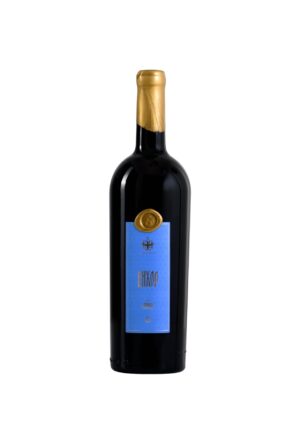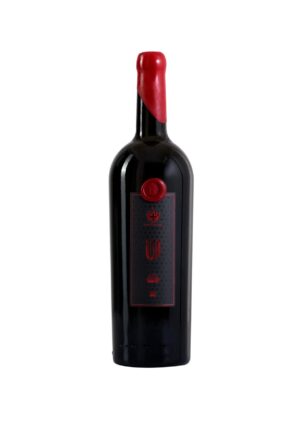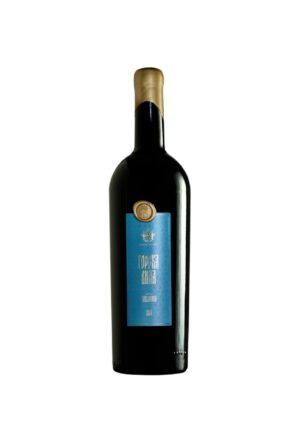You can contact us 24/7 0 800 300-353
16,99 €
Subtotal: 16,99 €
Add 33,01 € to cart and get free shipping!
Free Shipping on All Orders Over $100
16,99 €
Subtotal: 16,99 €
Add 33,01 € to cart and get free shipping!
Free Shipping on All Orders Over $100
Wine & grape production in Montenegro
Between the mountains and the sea, on perhaps the most desirable meridians for a pleasant life, N 41⁰-43⁰ and E 18⁰-20⁰, vineyards have found their place. Nestled on gentle slopes and stone terraces, they produce sweet and aromatic grapes full of solar energy, from which luxurious and intense wines have been crafted since ancient times.
For centuries, wine has been a part of this region’s culture, as evidenced by historical writings and archaeological artifacts. Structurally, Montenegro can be considered a wine-growing country, even though grape cultivation occupies only 2,850 hectares, or 1.12% of the total utilized agricultural land.
A little over 500 grape growers produce around 22 million kilograms of grapes annually, from which 113 wineries, large and small, produce about 11 million liters of wine, exporting 6.4 million liters. Year after year, wine remains one of the most significant agricultural export products, generating a trade surplus, with the value of exported wine nearly double that of imported wine. Wine contributes 25.8% to the total export of agricultural products.
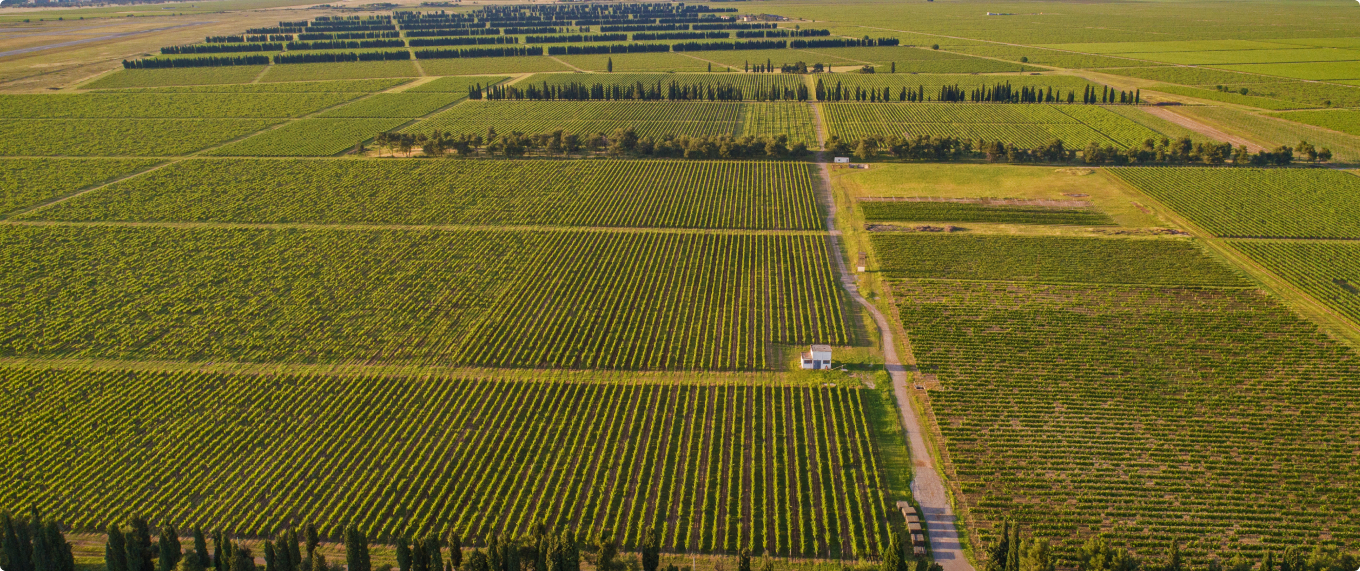
Montenegrin wine graces dining tables in 42 countries, enjoyed across nearly all continents, while domestic consumption is 20.4 liters per capita. Along well-established “Wine Routes,” tourists experience the hospitality of Montenegrin winemakers within protected ambient settings, where centuries-old stone terraces quietly allow vineyards to cascade down to the hot coastal sands or the shores of the largest Balkan lake.
The majority of grape production focuses on wine varieties, while table grapes are cultivated on less than 10% of vineyard land. The moderate, low yield of 8.5 tons per hectare, combined with favorable environmental conditions, allows for the production of high-quality grapes and wine in Montenegro. Of the total wine production, red wines account for 70%, white wines 25%, while rosé, sweet, and sparkling wines make up the remaining 5%. Recently, there has been a noticeable upward trend in rosé production, though liqueur and predicate wine production remains statistically negligible.
Segmentation of Wineries in Montenegro
The largest grape and wine producer in Montenegro is the winery “13. Jul – Plantaže” AD from Podgorica, with an annual wine production of 8–12 million liters, representing over 95% of total production. Premium red wines dominate, characterized by their southern, extractive nature with high alcohol content. However, there is an increasing need to diversify the range of Montenegrin wines, which, alongside the traditional Vranac, will enrich Montenegro’s wine mosaic. Among international varieties, the most cultivated grapes include Chardonnay, Cabernet Sauvignon, Merlot, Grenache, Marselan, Sauvignon Blanc, and Shiraz.

Montenegro’s wine sector can be aptly described through the concept of “unity in opposites.” Visitors perceive Montenegro as a harmonious unity of diversity, primarily due to its geographical contrasts—where mountains rise dramatically above the sea—and the blend of Mediterranean and continental climates within a relatively small space, all underpinned by a multicultural and multiethnic harmony.
This distinct experience is especially evident in viticulture. Although Montenegro is territorially one of the smaller wine-producing countries in Europe, it hosts the largest single complex vineyard, covering 2,350 hectares, owned by the renowned company “13 Jul – Plantaže.” The sector is divided into two parts: the giant “13 Jul – Plantaže,” which cultivates more than half of Montenegro’s vineyards, and small producers who preserve the secrets of Montenegrin karst (rocky terrain), cultivating grapes on smaller parcels, nurtured by endless love and an unwavering struggle for survival and freedom.
Since the adoption of the first Wine Law in mid-2007 and the signing of the Wine Protocol with the EU, Montenegrin viticulture has experienced a renaissance. Over the past 15 years, the number of registered wineries has rapidly increased, from 4 in 2007 to 113 in 2024. Smaller wineries have significantly increased their production volume, though this growth is not visible in overall statistics due to Plantaže’s dominance. Nevertheless, this segment of the wine sector is a beautiful tapestry of diversity, with recognized quality at numerous international competitions.
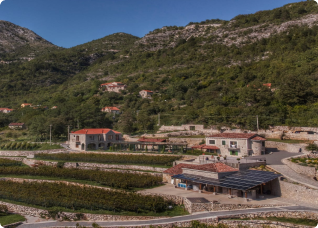

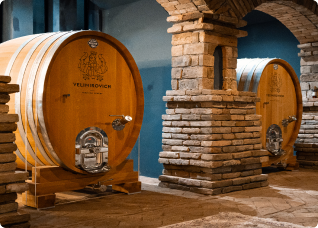
Perhaps nature’s artistry reaches its peak in Montenegro, where three blues meet—the skies, the Adriatic Sea, and Skadar Lake. Here, mountain and Mediterranean air currents collide, blending the scents of linden and pine with those of orange and peach. The deep green of coniferous forests intertwines with the silvery sheen of olive groves and the oldest Montenegrin vineyards. The reflections of water, the depth of forests, the warmth of rocky terrain, the aroma of the south, and the vibrant local colors are all captured in Montenegrin wine of unique character.
Montenegrin wine reflects the roots of culture, love for the land, skill, and the passion for creation. In the interplay between creativity and traditional methods and experience, complemented by a fusion of knowledge and artistry, the emphasis is always on quality and experience.
Montenegrins may not work tirelessly, but neither are they born without purpose. Over centuries, they have cultivated the culture of wine and, like Hesse’s Glass Bead Game players, strived for perfection. Combining blue and golden beads, they carefully choose the moment of transition into a sublime composition. Some, the wine artisans, craft masterpieces. Others enjoy these compositions while creating new values.
Structure of grape and wine producers
The majority of grape producers have vineyards under 2 hectares, representing 83% of all producers. Around 6% of producers have vineyards up to 5 hectares. Similarly, the structure of wineries is dominated by small production capacities. Out of 113 registered wineries:
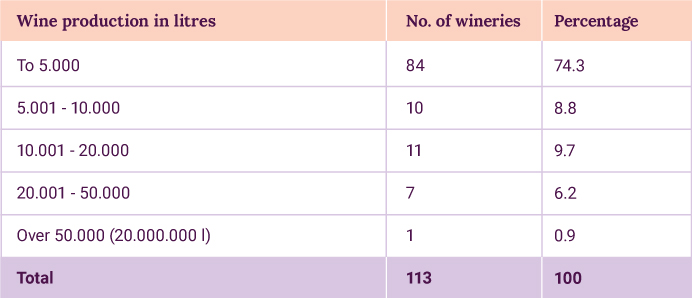
The only producer with a production capacity exceeding 50,000 liters is “13 Jul – Plantaže,” capable of producing 20 million liters of wine annually.


